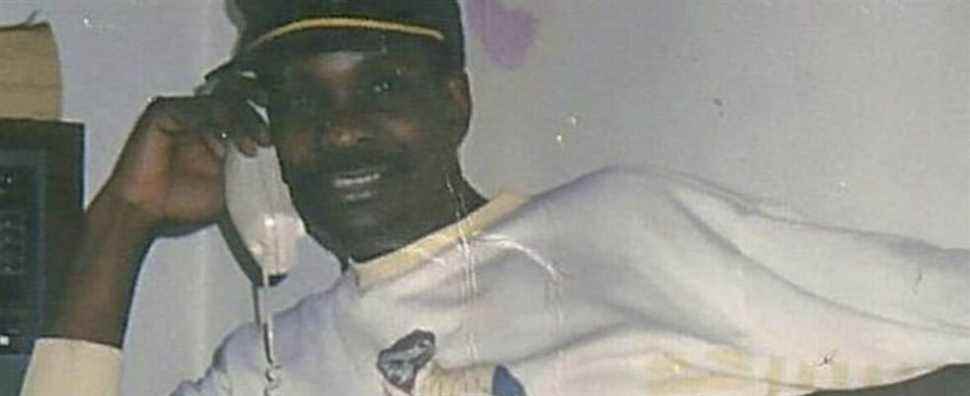Pierre Coriolan, a 58-year-old black Montrealer suffering from mental illness, died in 2017 during a police intervention carried out according to “outdated and in no way updated” methods, slice the coroner in his report delivered Wednesday. It recommends mandatory annual training for police officers on interventions with people in crisis or struggling with mental health problems.
“We owe it to Mr. Coriolan,” wrote coroner Luc Malouin in his report, filed after the holding of a public inquiry.
Because according to him, “this death has highlighted the consequences of a lack of police training”.
With his 16 recommendations, Coroner Malouin advocates multiple changes in this regard, for the good of all citizens, because no one is immune to an event that affects his mental state, he insists. “It is an increasingly obvious societal reality”.
Especially since this problem is not new: Mr. Malouin cites other coroner’s reports, written after citizens in crisis had been shot, as was the fate of Alain Magloire, among others, such as the identified The duty in a multi-part survey published last November.
This survey draws this conclusion: 70% of people killed by police officers in Quebec in 20 years were struggling with a known mental health problem. Most recently, last summer, Jean René Junior Olivier was shot dead in Repentigny after his mother called the emergency services because she feared he might be injured.
Feedback on the intervention
The death of Pierre Coriolan dates back to June 27, 2017. That evening, two emergency calls were made for a man in distress, it was communicated to the central: he suffers from mental problems, is in the process of destroy everything in its housing and could be armed with a stick or a knife.
In all, four police officers and two sergeants from the Service de police de la ville de Montréal (SPVM) will visit Mr. Coriolan. After hearing shouting and din going up the stairs to his accommodation, they find him sitting in front of his TV, motionless, “seeming to be in his world” mumbling incomprehensible words. He does not seem to realize the presence of police at the half-open door of his apartment and holds firmly in his hands what appears to be two knives, summarizes the coroner.
At the same time, two officers shout “Police! and “drop your weapons”. Mr. Coriolan gets up and begins to walk slowly towards the police, a knife in one hand and a screwdriver in the other. A conducted energy weapon and rubber bullets were used in an attempt to subdue the man, to no avail.
“The police then fear for their lives,” reports the coroner, and two of them open fire. Three bullets hit him: one will prove fatal.
“This intervention was not optimal”
At the end of the public inquiry during which the coroner heard experts, he retains this: “this intervention was not optimal”.
The operation would have benefited from being done more slowly, he explains in his 33-page report, in particular because the sight of officers in uniform can cause an increase in the crisis in the person in distress. That two police officers shouted orders at the same time “demonstrates the lack of planning and the excessive speed”. The operation only lasted 5 minutes.
The police also “should have gone into defensive mode” — that is to say, concluded that there was no longer any urgency to act — when they noticed that Mr. Coriolan was sitting in his apartment, alone, and seemed to be in his world.
“Obviously, there is no longer any danger for anyone and we must therefore find a peaceful outcome to the situation”.
But by shouting in the direction of Mr. Coriolanus and summoning him to drop his weapons, the police “caused a chain reaction”.
“This intervention does not meet what is expected of police officers trained in recent years,” the coroner said. Except that here, the six police officers in question had not received the most recent training in intervention with people in crisis and therefore acted with “outdated methods and in no way up to date with current knowledge”.
More recent courses advise police officers instead to act gently, not to raise their voices and to try to establish contact.
The result might have been the same, notes the coroner, but at least “the police would have taken all possible measures to avoid a tragedy”.
No blame for agents
However, he refuses to blame the six SPVM officers for not having applied methods that they were never taught: that they did not have this training is “problematic and unacceptable”.
Especially for police officers attached to post 21, in the heart of downtown Montreal, where there are many homeless people with substance abuse or mental health problems. He notes that 4% of all calls received by the SPVM are for people in crisis: that’s about 1,000 calls per week, he insists to clearly highlight the need for police training.
“Changing the way things are done in this kind of situation must be in the DNA of a police organization”.
In short, police officers – and their supervisors – need to be better trained to deal with sick and intoxicated people who no longer have contact with reality. Moreover, these trainings should not be offered in silos: one for firearms and another for de-escalation: the courses should integrate several skills – as in real life.
The coroner therefore recommends modifying the Police Act to include the obligation for each police officer to have annual training, including a mandatory requalification on the de-escalation of crisis situations and tactical communication.
In its comments sent to the coroner, the City of Montreal pointed out that if the police do even more training than at present, this will have a direct impact on the operational capacity of the SPVM. For its part, the Fraternity of police officers argues that the training schedule is already full: it therefore suggests increasing it from 30 to 37.5 hours per year to include these additional recommended trainings.
